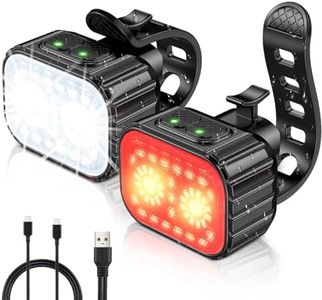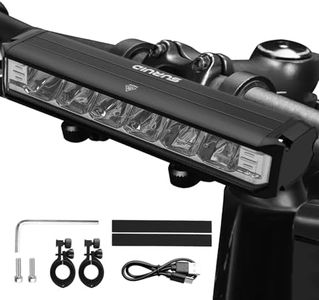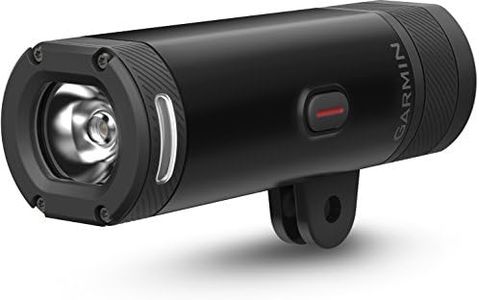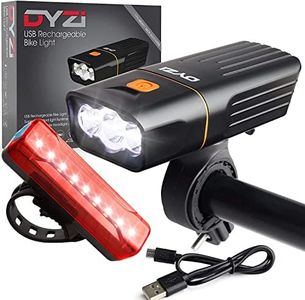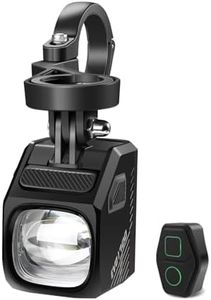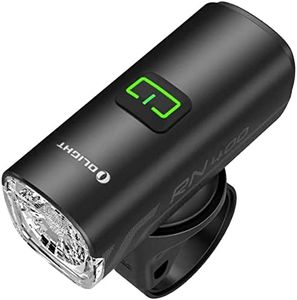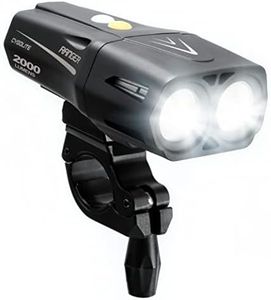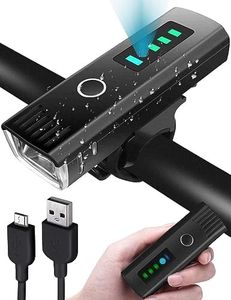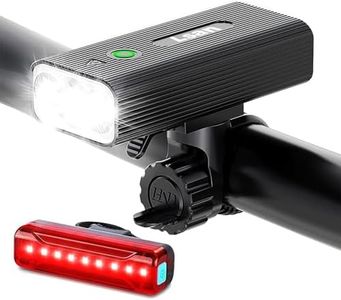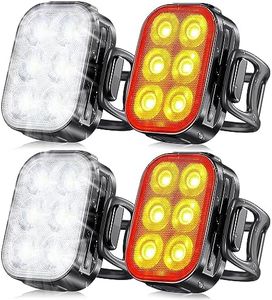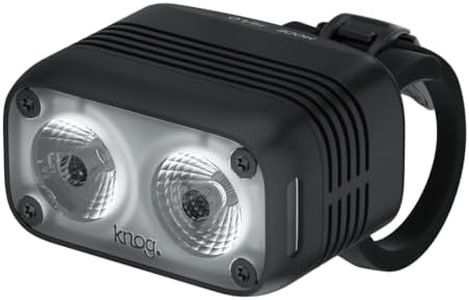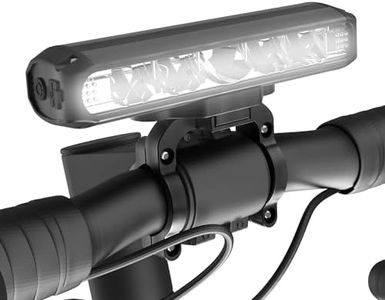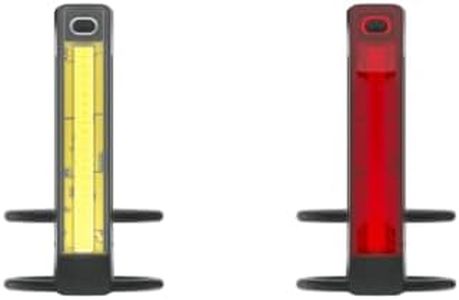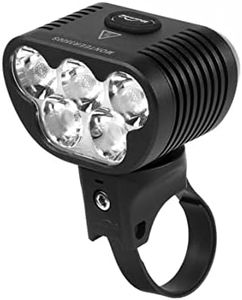We Use CookiesWe use cookies to enhance the security, performance,
functionality and for analytical and promotional activities. By continuing to browse this site you
are agreeing to our privacy policy
10 Best Bicycle Headlights
From leading brands and best sellers available on the web.Buying Guide for the Best Bicycle Headlights
Choosing the right bicycle headlight is essential for both your visibility and safety, whether you're riding through city streets or on unlit country roads. Understanding the key specs of bicycle headlights will help you select a light that fits your typical riding conditions and personal preferences. It’s important to think about where, when, and how often you ride, because this will direct you toward the best balance of brightness, battery life, and other features for your needs.Brightness (Lumens)Brightness, measured in lumens, tells you how much light a headlight puts out. This is crucial because it determines how well you can see and be seen. Lower values (around 100-300 lumens) are usually enough for well-lit city streets and make you visible to others, but may not light up the road ahead far enough for faster rides or in total darkness. Medium values (300-800 lumens) offer more visibility and are suitable for dimmer neighborhoods or light trail riding. High values (800+ lumens) are used for off-road riding or unlit roads where you need maximum visibility and to see farther ahead. To pick the right brightness for you, think about where you ride most—if it’s mostly lit urban areas, lower lumens may be enough; if you ride fast or where it’s totally dark, go for something brighter.
Battery LifeBattery life is how long the headlight can run before it needs recharging or new batteries. This matters because it affects how far and how often you can ride between charges. Short battery life (1-3 hours on high mode) works for short commutes, while longer battery life (4-10 hours or more) is better for longer rides or those who forget to recharge often. Most headlights list battery life for different modes (high, low, flashing), so you can decide based on how you plan to use it. Choose a headlight with a battery life that suits your typical ride time, and remember to allow some buffer for unexpected delays.
Mounting SystemThe mounting system is how the light attaches to your bike. It’s important because a secure, easy-to-use mount means less fuss and a safer ride—the light won’t wobble or fall off. Some mounting systems are fixed and require tools, offering strong stability, while tool-free or quick-release mounts are simpler to take on and off but might be less sturdy if not attached properly. If you switch your light between bikes or want to take it with you to prevent theft, look for a quick-release system. For single-bike use or rough trails, a more permanent, strong mount may be better.
Beam PatternBeam pattern describes how the light spreads ahead of you—either wide, narrow, or focused. This determines whether you see just a small patch or a broad area. A wide, even beam is better for city riding so you can see obstacles around you and be seen by drivers. A focused, long-range beam helps spot hazards further ahead, which is key for fast riding or off-road biking in the dark. Think about your usual riding environment—narrow and focused beams are best for speed and unlit roads; wider beams work well among traffic and in urban streets.
Weather ResistanceWeather resistance means how well the headlight stands up to rain, dust, and splashes. This is especially important if you ride in all weather, as you’ll want a light that keeps working no matter what. The degree of protection is often shown by an 'IP rating'—the higher the number, the better it handles water and dust. Occasional fair-weather riders may be fine with minimal protection, but regular commuters or those riding through unpredictable weather should choose a headlight with a higher IP rating for reliable performance.
Charging MethodCharging method indicates how you recharge the headlight—typically via USB or by changing disposable batteries. USB rechargeable lights are convenient for regular use since you can charge them almost anywhere, making them greener and more cost-effective in the long run. Disposable batteries can be handy for longer trips without charging access, but you’ll have ongoing replacement costs. Pick based on how easy it is for you to recharge—if you ride daily and have access to USB charging, rechargeable is often best; otherwise, consider battery-powered options for longer journeys without power.
